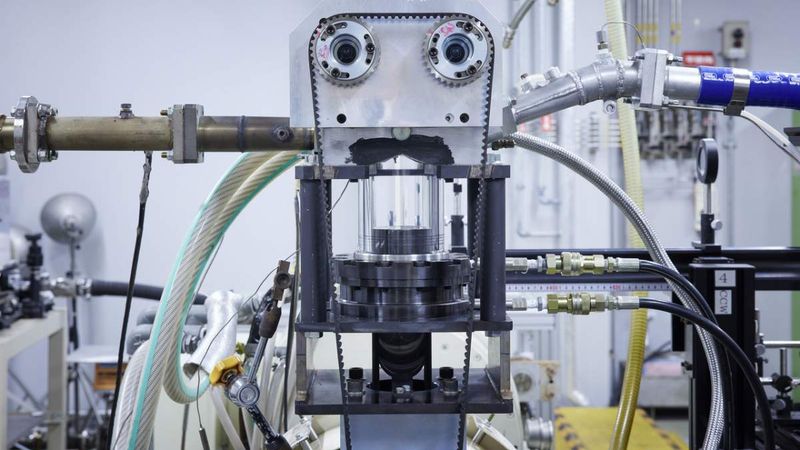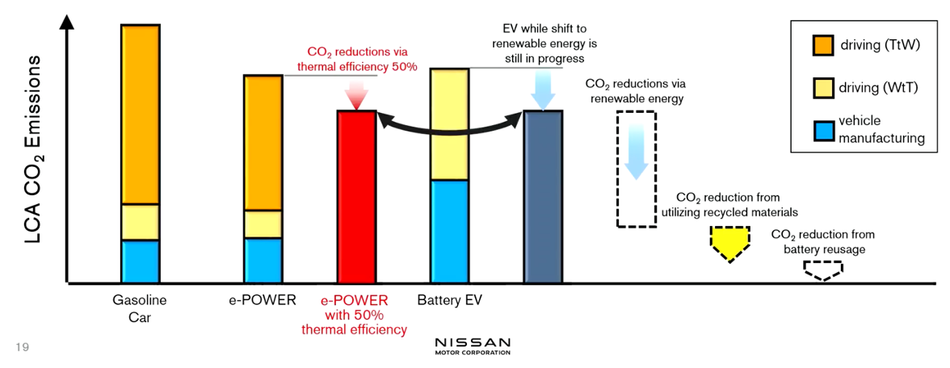Nissan Reduces CO2 Emissions With Gasoline Powered EV
Nissan's new e-POWER system houses a 50% thermally efficient internal combustion engine boasting lower total carbon emission than battery powered electric vehicles

Nissan's strong, tumble, and appropriately stretched robust ignition channel (STARC) system
This article was discussed in our Next Byte podcast.
The full article will continue below.
Nissan's Initiative
Nissan has set a goal to reach carbon neutrality by 2050 but they have decided to double down on hybrid powertrains in an industry that is heavily focused on battery electric vehicles (BEV).
Although electric vehicles don't burn fuel to operate, they still need power - which often comes from power grids utilizing fossil fuels - to charge their batteries. Therefore, the key question to address is how can we charge batteries with the least amount of carbon emissions?
Lifecycle Emissions
When analyzing total carbon emissions during the vehicle lifecycle, there are three aspects to consider: (i) the emissions from producing the vehicle, (ii) the emissions required to get the vehicle the fuel it needs to operate (whether that is electricity or fossil fuels), and (iii) the emissions produced when operating the vehicle.
The automaker recently revealed the strong, tumble, and appropriately stretched robust ignition channel (STARC) system which offers a 50% thermal efficiency. To put this feat into perspective, the current industry leader (Toyota) offers a peak thermal efficiency of ~40%.
Improved thermal efficiency is owed to two factors: (1) combusting a more diluted air-fuel mixture at a higher compression ratio allowing for a 46% thermally efficient process and (2) a waste heat recovery system that recaptures 4% of the thermal loss. Since the combustion engine is not directly connected to the wheels, it can consistenly operate in optimal conditions while charging the batteries that power the electric motors.
The Roadmap To Carbon Neutrality
As depicted in the lifecycle carbon emissions diagram, the current emissions associated with Nissan's e-POWER system is comparable with BEVs; however, by utilizing the STARC system, they are able to reduce emissions to that of the overall projected amount of a BEV charged using renewable energy sources (solar, wind, geothermal, etc.). Since renewable energy only makes up a small fraction of the overall power generated across the world, the e-POWER hybrid powertrain is a strong answer to the carbon emission reduction question while we figure out large-scale renewable energy implementations.

But they're not stopping there. If the reaching carbon neutrality was a 100m dash, internal combustion engines were the starting point, the e-POWER system is the halfway mark, and fuel cells are the finish line - at least according to Nissan.

